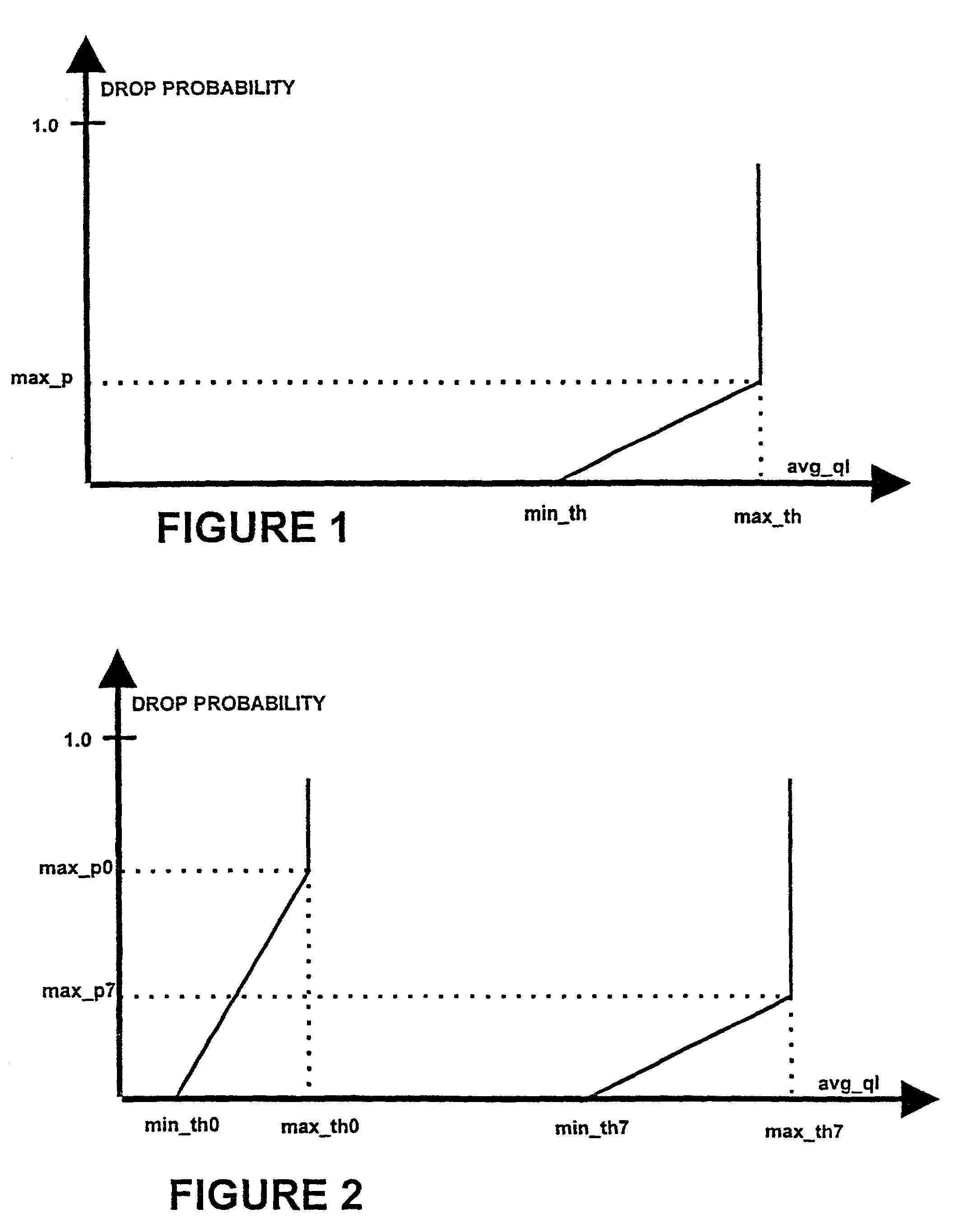Method, system and router providing active queue management in packet transmission systems
a packet transmission system and active queue technology, applied in data switching networks, instruments, frequency-division multiplexes, etc., can solve the problems of traffic tagged with anything but the highest priority level of drop precedence, traffic starvation of less prioritized traffic, etc., to prevent the starvation of low prioritized traffic
- Summary
- Abstract
- Description
- Claims
- Application Information
AI Technical Summary
Benefits of technology
Problems solved by technology
Method used
Image
Examples
Embodiment Construction
[0078]A glossary of the abbreviations used in this patent specification is set out below to facilitate an understanding of the present invention:
[0079]
AF:Assured ForwardingAQM:Active Queue ManagementCS:Class SectorDiffServ:Differentiated ServicesEF:Expedited ForwardingFIFO:First In First OutIETF:Internet Engineering Task ForceIP:Internet ProtocolISP:Internet Service ProviderltRIO:Load Tolerant RIOPHB:Per Hop BehaviourRED:Random Early DetectionRIO:RED In and OutRTT:Round Trip TimeTCP:Transmission Control ProtocolTSW:Time Sliding WindowUDP:User Datagram ProtocolWRED:Weighted REDWRT:WRED with Thresholds
[0080]The main objective of AQM mechanisms is to reduce the average queue length in routers. This provides less delay, avoids flows being locked out and, optimally, reduces the number of packets dropped in congested routers. In addition, AQM can be used to implement service differentiation between different flows, e.g., TCP flows. An advantage with AQM is that one single FIFO queue can b...
PUM
 Login to View More
Login to View More Abstract
Description
Claims
Application Information
 Login to View More
Login to View More - R&D
- Intellectual Property
- Life Sciences
- Materials
- Tech Scout
- Unparalleled Data Quality
- Higher Quality Content
- 60% Fewer Hallucinations
Browse by: Latest US Patents, China's latest patents, Technical Efficacy Thesaurus, Application Domain, Technology Topic, Popular Technical Reports.
© 2025 PatSnap. All rights reserved.Legal|Privacy policy|Modern Slavery Act Transparency Statement|Sitemap|About US| Contact US: help@patsnap.com



